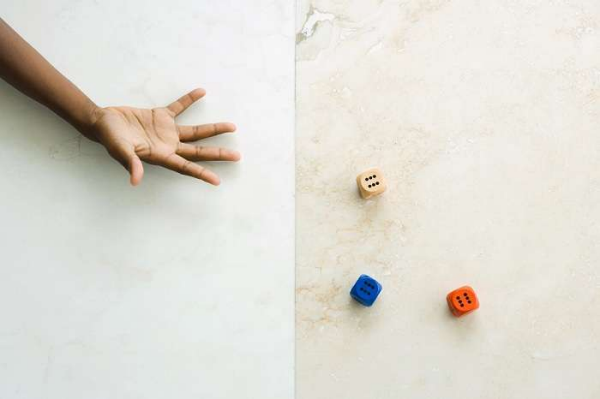Editor's note: This blog post was originally published April 28, 2015.
I'm always looking for different ways to get my kids to practice their math facts and build their number sense without having to use standard flash cards. Decks of cards and dominoes are great, but my kids most favorite are DICE! I promise if you invest in a pack of multi-colored dice you won't regret it! They are easy to carry around, can be pulled out in any circumstance -- even outside when it's windy -- and they work for all ages.
I especially recommend 10-sided dice which include all 10 digits, 0-9 (you can easily buy at Amazon) or you can do a lot with the regular 6-sided dice. The reason I like to use different colored dice is because you can create different variations of games using the varied colors. Below are some dice games to be played at all younger grade levels to work on number recognition, base 10 understanding, addition and subtraction:
- Number Roll: Roll several dice (you decide the number – anywhere from 5 to 10 dice) at the same time. Find numbers that match and pair them up. Keep rolling until you have made matches/pairs and all the dice are gone.
- Combos of 10: Roll 10 dice all together (you can use any number of dice). The player who calls out or pulls out combinations of 10 first gets to keep those dice. Keep rolling and calling out combinations of 10 (for example: 5 + 5; 6 + 4; 7 + 3…) until all the dice are gone.
- Addition Dice War: Using 2 dice each, players roll to find the greatest sum. Keep track of points using tally marks. The first player to 10 tallies wins! Variations: Play to find the lowest sum; use 3 dice instead of 2.
- Subtraction Dice: Using 3 dice (2 are red and 1 is white -- or any color combination you want) roll the two red dice to create a number: say you roll a 4 and 7 – this can be 47 or 74 – player's choice. Roll the white die and subtract that number from the "red" number created. Encourage this to be done mentally, even if children need to regroup. We want to encourage mental math and build confidence even with large numbers.
- Multi-step Dice: Use 3 or more dice with different colors – the players decide the rules ahead of time. If using 3 dice, try 2 green and 1 blue. Each player rolls all 3 dice at once, and has to add the 2 green and subtract the 1 blue mentally. If you get an answer less than 0 (negative number) just call that answer "a number less than zero" which has 0 points. Keep score depending on the larger or smaller answer.
- Odd/Even Dice: Decide ahead of the game who is "odd" and who is "even." Each player rolls 1 die, and adds them to find the sum. If the sum is even, the "even" player gets a point; if it's odd, the "odd" player gets a point. Next time, roll 2 dice each. Add to find the sums individually. If there are 2 odd numbers the "odd" player get 2 points; if there is 1 odd and 1 even, each player gets 1 point; and so on. The first player to 10 (set any goal) is the winner!
What math games do you play with your kids? Share your ideas on the Scholastic Parents Facebook page.


